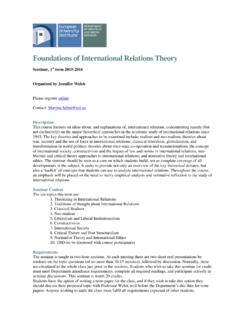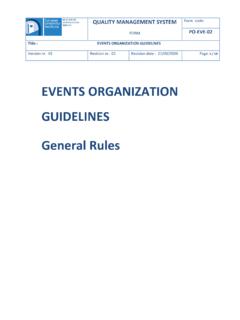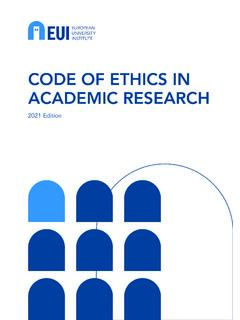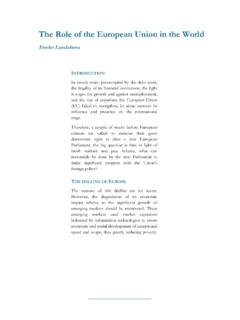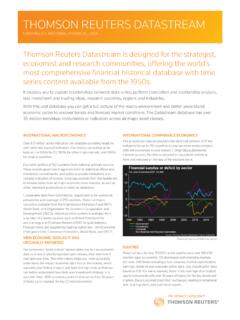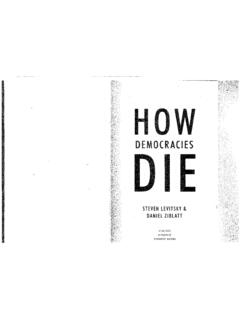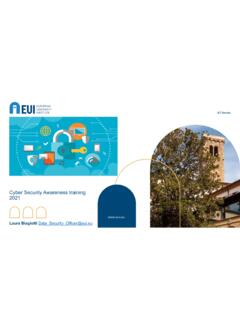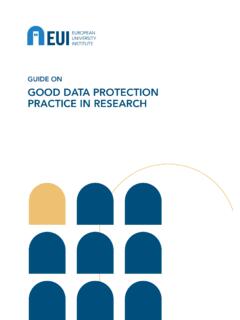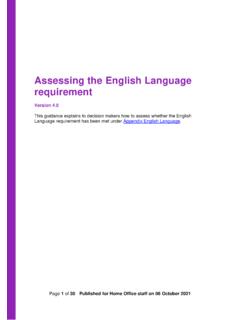Transcription of Common European Framework of Reference for Languages ...
1 Table 1. Common Reference Levels: global scaleC2 Can understand with ease virtually everything heard or read. Can summarise information from different spoken and written sources, reconstructing arguments and accounts in a coherent presentation. Can express him/herselfspontaneously, very fluently and precisely, differentiating finer shades of Proficientmeaning even in more complex understand a wide range of demanding, longer texts, and recogniseimplicit meaning. Can express him/herself fluently and spontaneouslywithout much obvious searching for expressions. Can use language flexiblyand effectively for social, academic and professional purposes. Can produceclear, well-structured, detailed text on complex subjects, showing controlleduse of organisational patterns, connectors and cohesive understand the main ideas of complex text on both concrete and abstract topics, including technical discussions in his/her field ofspecialisation.
2 Can interact with a degree of fluency and spontaneity thatmakes regular interaction with native speakers quite possible without strainfor either party. Can produce clear, detailed text on a wide range of subjectsand explain a viewpoint on a topical issue giving the advantages and Independentdisadvantages of various understand the main points of clear standard input on familiar mattersregularly encountered in work, school, leisure, etc. Can deal with mostsituations likely to arise whilst travelling in an area where the language isspoken. Can produce simple connected text on topics which are familiar or ofpersonal interest. Can describe experiences and events, dreams, hopes andambitions and briefly give reasons and explanations for opinions and understand sentences and frequently used expressions related to areas of most immediate relevance ( very basic personal and family information,shopping, local geography, employment).
3 Can communicate in simple androutine tasks requiring a simple and direct exchange of information onfamiliar and routine matters. Can describe in simple terms aspects of his/herbackground, immediate environment and matters in areas of immediate understand and use familiar everyday expressions and very basic phrasesaimed at the satisfaction of needs of a concrete type. Can introducehim/herself and others and can ask and answer questions about personaldetails such as where he/she lives, people he/she knows and things he/shehas. Can interact in a simple way provided the other person talks slowly andclearly and is prepared to European Framework of Reference for Languages : learning, teaching, assessment24In order to orient learners, teachers and other users within the educational system forsome practical purpose, however, a more detailed overview is likely to be necessary.
4 Suchan overview can be presented in the form of a grid showing major categories of languageuse at each of the six levels. The example in Table 2 (on the next two pages) is a draft fora self-assessment orientation tool based on the six levels. It is intended to help learnersto profile their main language skills, and decide at which level they might look at achecklist of more detailed descriptors in order to self-assess their level of proficiency. For other purposes, it may be desirable to focus on a particular spectrum of levels, anda particular set of categories. By restricting the range of levels and categories covered tothose relevant to a particular purpose, it will be possible to add more detail: finer levelsand categories. Such detail would enable a set of modules to be mapped relative to oneanother and also to be situated in relation to the Common , rather than profiling categories of communicative activities, one maywish to assess a performance on the basis of the aspects of communicative language com-petence one can deduce from it.
5 The chart in Table 3 was designed to assess spoken per-formances. It focuses on different qualitative aspects of language Illustrative descriptorsThe three tables used to introduce the Common Reference Levels (Tables 1, 2 and 3) aresummarised from a bank of illustrative descriptors developed and validated for the CEFin the research project described in Appendix B. These formulations have been mathe-matically scaled to these levels by analysing the way in which they have been interpretedin the assessment of large numbers of ease of consultation, scales of descriptors are juxtaposed to the relevant categoriesof the descriptive scheme in Chapters 4 and 5. The descriptors refer to the following threemetacategories in the descriptive scheme:Communicative activities Can Do descriptors are provided for reception, interaction and production.
6 There maynot be descriptors for all sub-categories for every level, since some activities cannot beundertaken until a certain level of competence has been reached, whilst others maycease to be an objective at higher Can Do descriptors are provided for some of the strategies employed in performing com-municative activities. Strategies are seen as a hinge between the learner s resources (com-petences) and what he/she can do with them (communicative activities). The principlesof a) planning action, b) balancing resources and compensating for deficiencies duringexecution and c) monitoring results and undertaking repair as necessary are describedin the sections dealing with interaction and production strategies in Chapter 4. Common Reference Levels25 Common European Framework of Reference for Languages : learning, teaching, assessment26 Table 2.
7 Common Reference Levels: self-assessment gridA1A2B1 ListeningI can recognise familiarI can understand phrases I can understand the main words and very basicand the highest frequency points of clear standard phrases concerning vocabulary related to areas speech on familiar matters myself, my family andof most immediate personal regularly encountered in immediate concreterelevance ( very basic work, school, leisure, etc. I surroundings whenpersonal and family can understand the main people speak slowlyinformation, shopping, point of many radio or TV and area, employment).programmes on currentI can catch the main point inaffairs or topics of personal short, clear, simple messagesor professional interest when and delivery is relatively slow and can understandI can read very short, simple I can understand texts that familiar names, wordstexts.
8 I can find specific, consist mainly of high and very simplepredictable information in frequency everyday or job-sentences, for examplesimple everyday material related language. I can on notices and posterssuch as advertisements, understand the description of or in , menus and events, feelings and wishes in timetables and I can personal short simple personal can interact in a simple I can communicate in simpleI can deal with most situations Interactionway provided the otherand routine tasks requiring a likely to arise whilst travelling person is prepared tosimple and direct exchange ofin an area where the languagerepeat or rephrase thingsinformation on familiar topicsis spoken. I can enter at a slower rate of speechand activities. I can handle unprepared into conversation and help me formulatevery short social exchanges, on topics that are familiar, of what I m trying to say.
9 Ieven though I can t usually personal interest or pertinent can ask and answer simpleunderstand enough to keep to everyday life ( family, questions in areas ofthe conversation going , work, travel and immediate need or oncurrent events).very familiar can use simple phrases I can use a series of phrases I can connect phrases in a Productionand sentences to describeand sentences to describe in simple way in order to describe where I live and people Isimple terms my family and experiences and events, my people, living dreams, hopes and ambitions. conditions, my educational I can briefly give reasons and background and my present explanations for opinions and or most recent I can narrate a story or relate the plot of a book or film and describe my can write a short, simpleI can write short, simple notesI can write simple connected postcard, for exampleand messages relating to text on topics which are sending holiday in areas of immediatefamiliar or of personal can fill in forms withneed.
10 I can write a very simpleI can write personal letters personal details, forpersonal letter, for exampledescribing experiences and example entering mythanking someone for , nationality on a hotelregistration Reference Levels27B2C1C2I can understand extended speechI can understand extended speech I have no difficulty in understanding and lectures and follow even even when it is not clearly any kind of spoken language, complex lines of argument provided structured and when relationshipswhether live or broadcast, even when the topic is reasonably familiar. I are only implied and not signalleddelivered at fast native speed, can understand most TV news and explicitly. I can understand provided I have some time to get current affairs programmes. I can television programmes and films familiar with the the majority of films in without too much can read articles and reports I can understand long and I can read with ease virtually all concerned with contemporary complex factual and literary forms of the written language, problems in which the writers adopttexts, appreciating distinctions of including abstract, structurally or particular attitudes or viewpoints.
